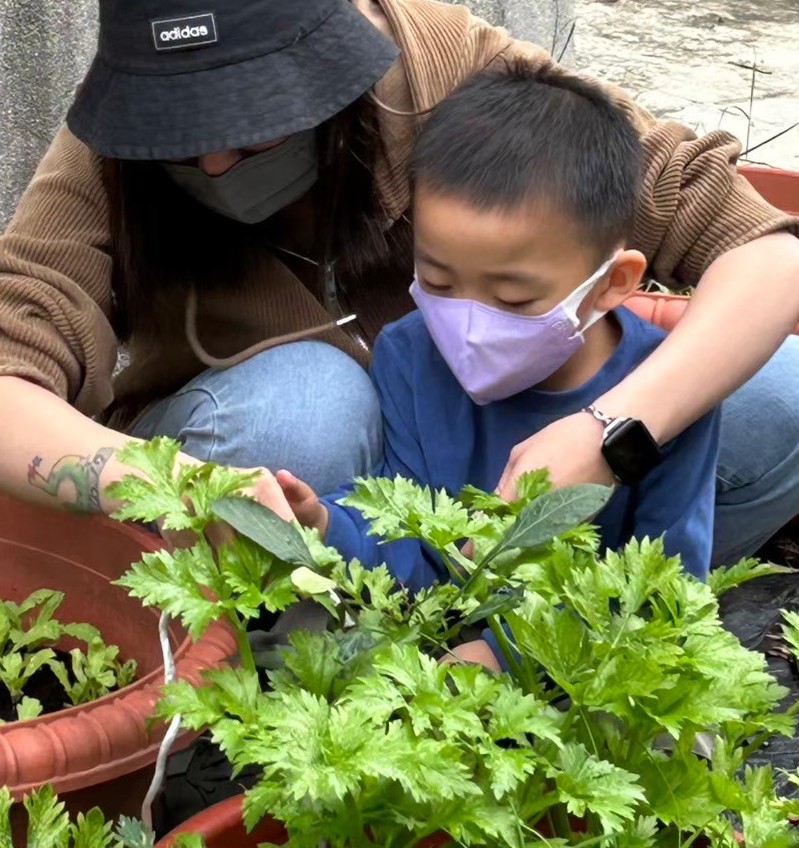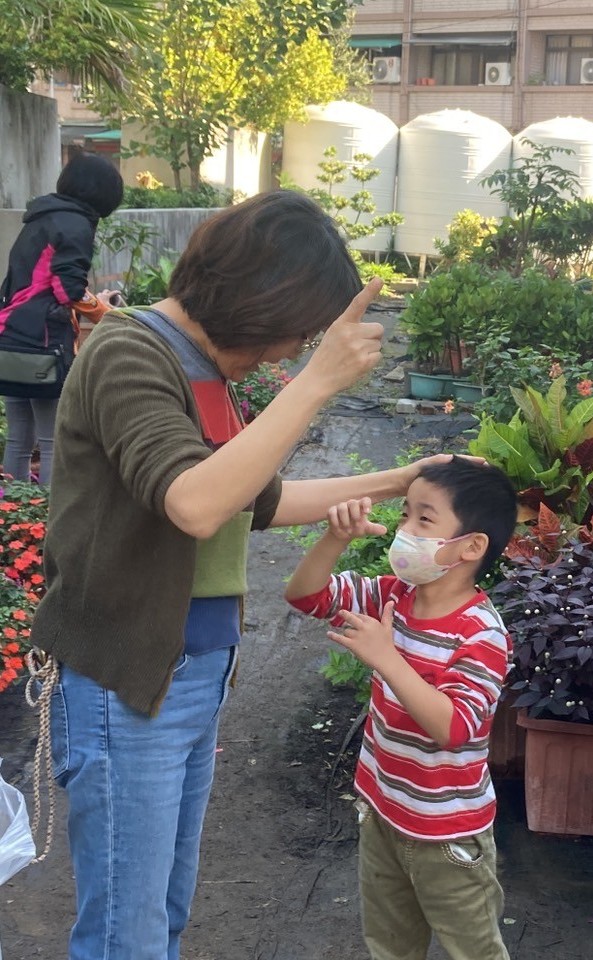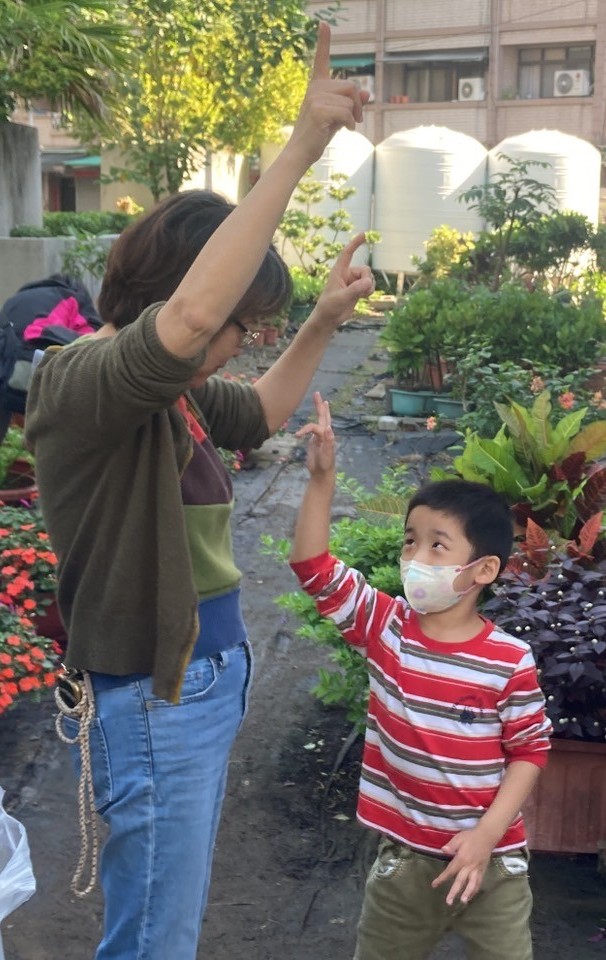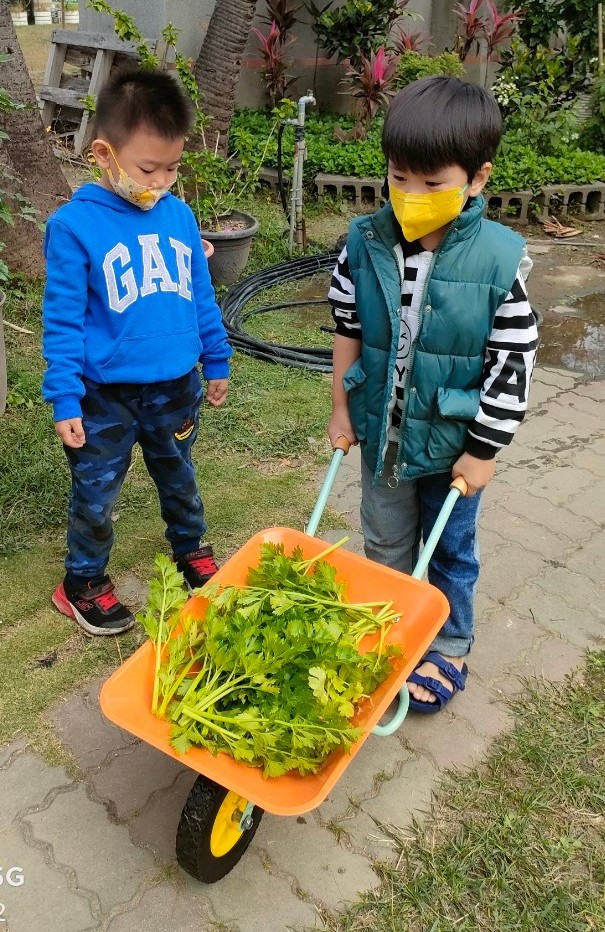Horticultural Therapy Connections
What Is Sensory Integration?


There is a close connection between horticulture and sensory integration, particularly in how horticultural activities naturally and diversely stimulate the sensory systems, supporting the development and regulation of sensory integration abilities. This article introduces the sensory integration theory briefly and a horticultural therapy program based on sensory integration, which I carried out in collaboration with occupational therapists alongside my student at an early intervention outpatient clinic in a hospital in Taiwan, serving children aged three to five.
Sensory integration refers to the brain’s ability to receive, organize, and interpret sensory information from both within and outside the body—such as touch, proprioception, vestibular input, vision, hearing, taste, and smell—and to enable individuals to respond efficiently and appropriately. This theory was first introduced in the 1970s by American occupational therapist and neuropsychologist A. Jean Ayres, who stated:
“Sensory integration is the neurological process that organizes sensation from one’s own body and the environment and makes it possible to use the body effectively within the environment.”
Ayres, A. J. (1972). Sensory Integration and Learning Disorders
Importance of Sensory Integration
Sensory integration is a cornerstone of human functioning which enables individuals to process complex sensory input efficiently. There are some key reasons why sensory integration is important (Ayres, 1972; Bundy et al., 2002; Miller et al., 2012):




- Supports Attention and Learning
- Effective sensory integration allows children to filter and prioritize sensory input, helping them to stay focused, sit still, and engage in academic tasks. It is especially important for reading, writing, and following instructions in structured environments, such as classrooms.
- Regulates Emotions and Behavior
- Sensory input affects arousal levels. Proper integration helps individuals modulate their emotional responses and maintain self-regulation. For example, children who can effectively integrate sensory information are more likely to remain calm in noisy or crowded settings.
- Facilitates Motor Planning and Coordination
- The integration of vestibular (balance), proprioceptive (body awareness), and tactile (touch) inputs supports body coordination, balance, and fine/gross motor skills necessary for activities such as tying shoes, drawing, or playing sports.
- Promotes Social Participation
- Sensory integration plays a crucial role in perceiving nonverbal cues, managing interpersonal space, and participating in group activities. These abilities are fundamental for developing friendships and navigating social contexts.
- Enhances Independence in Daily Life
- Tasks like dressing, eating, and grooming require integrated sensory processing. Children and adults with well-developed sensory integration can perform these activities more independently and efficiently.
What Is Sensory Integration Dysfunction?

Sensory Integration Dysfunction (SID), also known as Sensory Processing Disorder (SPD), is a neurological condition in which the brain has difficulty receiving, processing, and organizing sensory information from the environment and the body. As a result, individuals may have unusual responses to sensory input, which can significantly affect their daily functioning, emotional regulation, motor coordination, and social interactions. According to Miller et al. (2007), SPD can be categorized into three primary patterns:

- Sensory Modulation Disorder (SMD):
- Individuals may be over-responsive (e.g., distressed by loud sounds or certain textures), under-responsive (e.g., unaware of pain or temperature), or sensory-seeking (e.g., constantly moving, touching, or crashing into things).
- Sensory Discrimination Disorder (SDD):
- Difficulty interpreting differences between sensory stimuli, such as distinguishing between similar textures or sounds.
- Sensory-Based Motor Disorder (SBMD):
- Includes postural disorder (poor balance and core stability) and dyspraxia (difficulty with motor planning and execution).
These challenges are not caused by physical disabilities or intellectual impairment, but rather by the brain’s inefficiency in processing sensory data (Miller et al., 2007).
SID’s Impact on Functioning
Sensory integration dysfunction can:

- Disrupt academic performance and classroom behavior (Ayres, 1979/2005).
- Affect emotional regulation, resulting in anxiety, meltdowns, or withdrawal (Schaaf & Davies, 2010).
- Impair fine and gross motor coordination, affecting skills like handwriting or playing sports (Ayres, 1979/2005; Miller et al., 2012).
- Influence on social skills due to misinterpreting social cues or struggling in overstimulating environments(Ayres, 1979/2005; Miller et al., 2012).
Children with conditions like autism spectrum disorder (ASD) and ADHD often display sensory processing difficulties at a higher rate than typically developing children (Ben-Sasson et al., 2009; Miller et al., 2012).
Horticultural Activities Promote Sensory Integration
Gardening activities engage multiple sensory systems in a natural setting, making it an effective and enjoyable way to promote sensory integration. For example:

- Tactile (Touch) Input
- Interacting with soil, plants, leaves, seeds, and water offers a variety of textures and temperatures. These experiences help individuals become more comfortable with various tactile sensations, thereby reducing tactile defensiveness and enhancing sensory discrimination (e.g., distinguishing between rough and smooth surfaces).
- Proprioceptive Input (Body Awareness)
- Activities such as lifting pots, digging with tools, or pulling weeds provide resistance and deep pressure input to muscles and joints, thereby stimulating their function. This enhances body awareness, supports motor planning, and helps calm the nervous system through proprioceptive feedback.
- Vestibular Input (Balance and Movement)
- Movements such as bending, reaching, standing, using a wheelbarrow, or walking across uneven ground challenge the vestibular system, thereby improving balance, spatial orientation, and postural control—skills essential for daily functioning.
- Visual and Auditory Stimulation
- Observing the colors, shapes, and growth patterns of plants enhances visual tracking and attention. Natural sounds—such as birds, wind, or water—offer calming auditory input, helping individuals regulate arousal levels and stay engaged.
- Olfactory and Gustatory (Smell and Taste) Input
- Smelling herbs, flowers, and fresh soil stimulates the olfactory system, while tasting edible plants can enhance gustatory experiences. These inputs can support memory, emotional regulation, and sensory exploration in a safe, natural context.
- Emotional and Social Benefits
- Sensory-rich horticultural activities often take place in calming outdoor settings and can be conducted in groups, fostering social interaction, cooperation, and emotional regulation. They also promote a sense of accomplishment, which boosts confidence and engagement.
Therefore, for preschoolers, gardening tasks can provide rich and diverse sensory input to support neurodevelopment and functional skills.
Early Childhood Program

We integrated the above concepts and proposed a sensory integration-based horticultural therapy program for children (three with autism and one with ADHD) in an early childhood care clinic of a hospital in Taiwan.

The program aims to “promote sensory integration of children” and conducts 12 gardening activities once a week. The activities were jointly planned by a horticultural therapist and an occupational therapist, including mixing soil and fertilizer, transporting soil to fill large flower pots, planting vegetables, herbs and flower seedlings, weeding, watering, herb smell and taste games, picking flowers and plants for flower arrangements, flower and leaf rubbings, making seed musical instruments, flower and leaf mandala creation, picking vegetables and tomatoes, etc. The effectiveness evaluation tool used in the hospital is the Sensory Integration Scale for Preschoolers.
The results showed that the four children improved in most sensory integration items, but also deteriorated in a few items; however, these items showed great differences among the different children. Qualitative records showed that the children found planting plants “interesting” and began to be willing to eat vegetables. These results show the potential of gardening activities as an early intervention for sensory integration in children with autism and ADHD.
Acknowledgments
The author would like to thank occupational therapist Pei Jung Wu and students Li Chuan Wu and Xiang Qing Jin for their contributions in making this project a success. She also likes to thank the children for their participation and the parents for their assistance.
References
Ayres, A. J. (1972). Sensory Integration and Learning Disorders. Los Angeles: Western Psychological Services.
Ayres, A. J. (2005). Sensory integration and the child: Understanding hidden sensory challenges (25th anniversary ed.). Western Psychological Services. (Original work published 1979)
Ben-Sasson, A., Carter, A. S., & Briggs-Gowan, M. J. (2009). Sensory over-responsivity in elementary school: Prevalence and social-emotional correlates. Journal of Abnormal Child Psychology, 37(5), 705–716. https://doi.org/10.1007/s10802-008-9295-8
Bundy, A. C., Lane, S. J., & Murray, E. A. (2002). Sensory Integration: Theory and Practice. 2nd ed. F.A. Davis.
Miller, L. J., Anzalone, M. E., Lane, S. J., Cermak, S. A., & Osten, E. T. (2007). Concept evolution in sensory integration: A proposed nosology for diagnosis. American Journal of Occupational Therapy, 61(2), 135–140. https://doi.org/10.5014/ajot.61.2.135
Miller, L. J., Nielsen, D. M., & Schoen, S. A. (2012). Attention deficit hyperactivity disorder and sensory modulation disorder: A comparison of behavior and physiology.
Research in Developmental Disabilities, 33(3), 804–818.
Schaaf, R. C., & Davies, P. L. (2010). Evolution of the sensory integration frame of reference. American Journal of Occupational Therapy, 64(3), 363–367. https://doi.org/10.5014/ajot.2010.09072
Schaaf, R. C., & Mailloux, Z. (2015). Clinician’s Guide for Implementing Ayres Sensory Integration: Promoting Participation for Children with Autism. AOTA Press.





